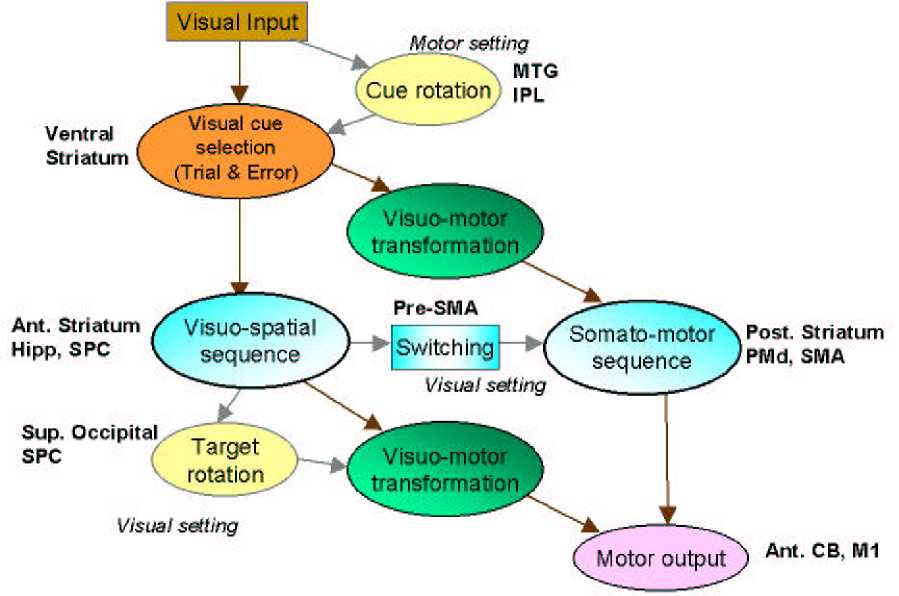Brain areas and sequencing processes.

Figure S4: A visual cue is selected by trial and error from the visual inputs
and motor output is generated after an appropriate visuo-motor
transformation. The visual cues and motor responses that are processed
sequentially are stored in the representational buffers depicted as visuo-
spatial sequence and somato-motor sequence, respectively. Once
representations are learned, they can guide the performance directly without
resorting to the selection process. Based on observations in previous studies
involving trial and error learning (Jenkins et al., 1994; Jueptner et al., 1997b),
sustained activity observed in the ventral striatum in both the early and late
stages of visual setting may be attributed to the trial and error process
adopted for cue selection. Interestingly, when there was no emphasis on cue
selection process as in the motor setting, ventral striatal activity was absent.
Activity found in the rotated > normal contrasts would reveal areas related to
rotational transformations. Activity observed in the superior occipital gyrus and
superior parietal cortex in the visual > normal contrast may support processes
involved in target rotation and the activity in the middle temporal gyrus and
inferior parietal cortex in the motor > normal contrast may be related to the
processes involved in cue rotation. In the visual-normal experiments subjects
used the same visuo-spatial sequence but learned two motor sequences, one
corresponding to the normal and the other to visual setting. We suggest that
the pre-Supplementary Motor Area (Pre-SMA) may have a role in learning
new sequence and also in sequence switching (Shima et al., 1996). Anterior
cerebellum is engaged in the optimization of movement parameter and timing
information required for motor execution mediated by the Primary Motor
Cortex (M1). We suggest that as sequence learning progresses from the early
to the late stage, visuo-spatial sequence representation gets established in
anterior striatum, superior parietal cortex (SPC) and the hippocampus
whereas somato-motor sequence representation is encoded in the posterior
44
More intriguing information
1. The name is absent2. The name is absent
3. On the job rotation problem
4. The Provisions on Geographical Indications in the TRIPS Agreement
5. The name is absent
6. CURRENT CHALLENGES FOR AGRICULTURAL POLICY
7. The name is absent
8. Activation of s28-dependent transcription in Escherichia coli by the cyclic AMP receptor protein requires an unusual promoter organization
9. The name is absent
10. CHANGING PRICES, CHANGING CIGARETTE CONSUMPTION